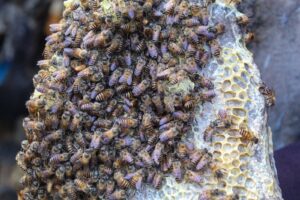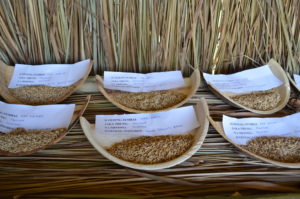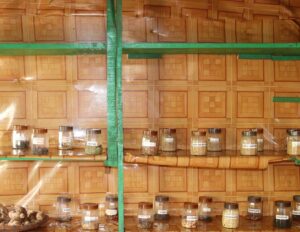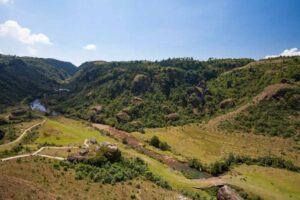Archaeological evidence shows us that the relationship between humans and bees is at least 17,000 years old. In the modern world, it is called apiculture. In Meghalaya, the genesis of beekeeping or rearing is unknown but certain communities have been active producers of honey for decades.
In the NESFAS project, “Protection of Forests in Meghalaya by Adopting Participatory, Gender-Centric, and Equitable Approaches,” supported by The Nature Conservancy, detailed documentation through the People’s Biodiversity Register (PBR) offered valuable insights into apiculture practices in various villages of Meghalaya.
In Daribokgre and Tosekgre, West Garo Hills, every household practices beekeeping to enhance economic prosperity, a tradition followed for many years using wooden boxes (2 feet wide, 3 feet long) with a tin roof and a small opening for bees. The locals harvest Apis cerana indica (locally known as Bija kol). Bees can naturally occupy the box or be introduced manually. For extraction, smoke is used to disperse bees. Honeycombs are removed delicately and honey is extracted using a cotton cloth. Honey is harvested twice a year, in January-February and April. April honey, collected during the flowering season is considered superior using the traditional hollow wooden boxes, affixed to trees and immobile. Bees naturally colonize these boxes or are sometimes introduced by capturing and trimming the wings of wild drone bees. Honey is in great demand as it has medical properties. It is sold at 500 rupees for 250 ml.
In Durakantagre, West Garo Hills, traditional beekeeping is practiced for self-use and limited commercial purposes. Modern bee boxes were introduced by Mr. Kalison Ch. Marak after being trained in 2018 by Dakopgre Industry Office in Umran. The process of rearing is similar to the other two villages. The boxes placed in dry areas to protect them from pests, coupled with modern methods have resulted in improving the yield. However, here, honeycombs are boiled, cooled, and strained for purity.
 The people of Borgang Marngar, Ri Bhoi, their bee rearing technique is peculiar as they are self-styled beekeepers and integrate beekeeping with agriculture. They capture wild bees known as “Hartla bolor“.
The people of Borgang Marngar, Ri Bhoi, their bee rearing technique is peculiar as they are self-styled beekeepers and integrate beekeeping with agriculture. They capture wild bees known as “Hartla bolor“.
In the Khasi Hills including Ri Bhoi, bee rearing methods are closely knitted together. In the villages of Jatah Lakadong, Ladmawphlang, and Siangkhnai, East Khasi Hills, the wild-bees or “Ngap Khlaw” are gathered in colonies including the queen bee and transferred to wooden cabinets. Minimal care and interference are induced. Polythene sheets are used to protect from rain. Sugar syrup is provided during heavy rainfall as food. For extraction, smoke is used to disperse bees, and honey is filtered through cotton netting. The people of Jatah have been practicing bee rearing for over fifty years now.
Khapmaw another village in East Khasi Hills mixes traditional with modern methods for maximum production. They rear wild bees including queen bees known locally as “Ka Kiaw” by capturing them from the wild and transferring them either to traditional hollow boxes (Ksing pyllun) or modern stacked boxes (Ksing sorkar).
Each village’s unique traditional knowledge in apiculture reflects their adaptation to local environments and resources, balancing traditional methods with modern influences to sustain their livelihoods and preserve cultural heritage. Honey acts predominantly as a secondary income for the families. It is sold locally and even abroad. Apart from economic benefits, bees support agricultural production and help balance biodiversity by enhancing crop yield through pollination.




